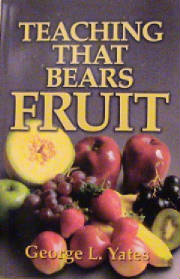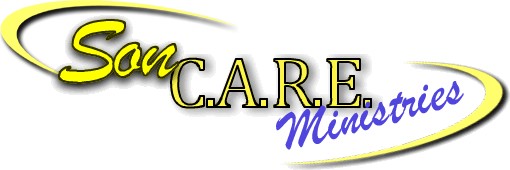 Teaching That Bears Fruit helps you understand how Jesus used the human learning process to perpetuate true learning among His listeners.
Teaching That Bears Fruit helps you understand how Jesus used the human learning process to perpetuate true learning among His listeners.
Jesus never had a class room to call His own. He never had a whiteboard or chalk board, a flannelgraph, or even PowerPoint. Most of His recorded teaching took place in the streets, on the hillsides, and at the dinner table. He didn’t meet at 9:30 on Sunday morning. Yet His three and one half years of teaching a small band of learners has turned the world upside down.
Teaching That Bears Fruit unlocks the toolbox of Jesus’ teaching.
One of the great fallacies of our day is that if we study enough, gather as much information as we can and carry all that we can into the classroom or pulpit, we can teach an effective lesson. The main objection I have with this theory and common practice is that it goes against all human learning processes. I call this common practice the content-Dump-truck method…
A greater tragedy in this method is that rarely do we give our learners any means of carrying this content into their own lives.
From Chapter one
The other thing I remember about that dump truck is that the guys with experience driving it could raise the bed and empty the load in a smooth manner. When I tried, the entire load (normally finely-ground limestone) seemed to come out in one huge pile– at least when I first started. The load was not applicable in the configuration of a huge pile as I dumped it. To fulfill its purpose someone else (an entire crew) had to come in rake, scoop, and shovel making a smooth and usable surface.
Christian education has in many ways taken on the characteristics of the dump truck. Many classrooms and pulpits are filled with a teacher/preacher who has spent several hours the previous week gleaning from several commentaries and surfing the web for as much theological material as possible on the scriptures concerning this week’s lesson. There is nothing wrong with this in and of itself. In fact these leaders are to be commended for their commitment and effort. However, the downfall comes when they stand behind the pulpit or in front of the class. We have gained so much knowledge and insight to this set of scriptures that we do not want our students to miss out on any part of it. Therefore, we back our truck up in the classroom each week and raise the bed and dump it all on our students. Most of the time it is like my first few tries with the dump truck. It all comes out in one heaping pile. Like the limestone, it is not usable in one huge pile.
Information, facts, and knowledge do not create learning. They may create an unpleasant and unsightly mound that is not applicable in the lives of our learners. Most of us do not have the luxury of having a crew coming in behind us to work the mound into a usable surface of transforming wisdom.
